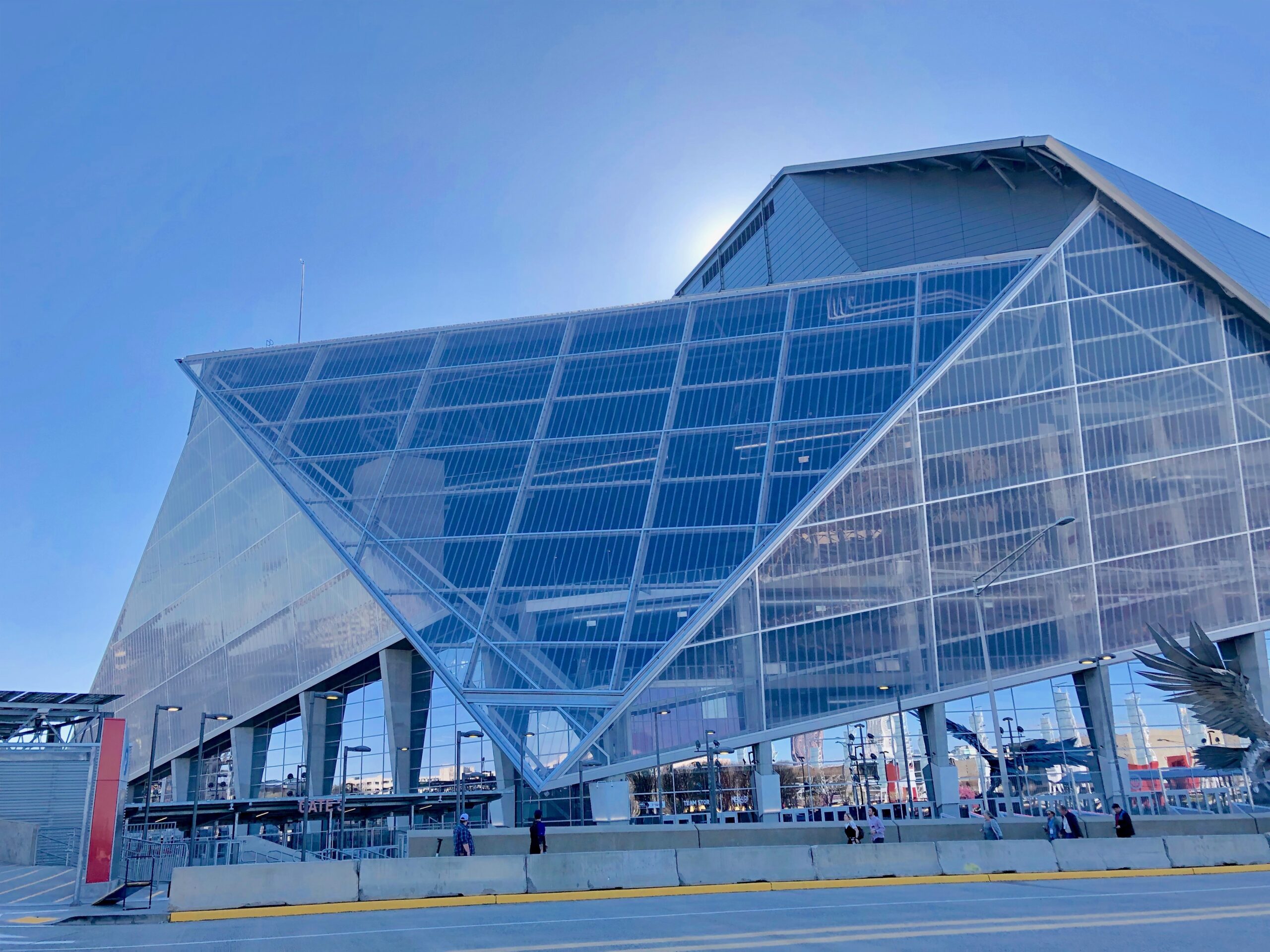Last updated on: November 4, 2023
The FIFA World Cup is the most prestigious and popular football tournament in the world, attracting millions of fans and viewers every four years. The next edition of the World Cup will be held in 2026, and for the first time, it will be co-hosted by three countries: Canada, Mexico, and the United States.
This will also be the first World Cup with 48 teams, up from 32, and 80 matches, up from 64. The World Cup 2026 promises to be a historic and spectacular event, showcasing the best of football and the diversity of North America.
Exploring the Host Cities
The World Cup 2026 will feature 16 host cities, with 11 in the United States, three in Mexico, and two in Canada. Each city has its charm, culture, and history, as well as a passion for football and sports in general. Some of the host cities are:
Toronto, Ontario, Canada
The largest and most populous city in Canada. Toronto is a cosmopolitan and multicultural metropolis that offers a variety of attractions, entertainment, and cuisine. Toronto is also home to the CN Tower, one of the tallest structures in the world, and the Hockey Hall of Fame, a museum dedicated to Canada’s national sport. Toronto’s stadium for the World Cup is BMO Field, which has a capacity of 45,500 and is home to Toronto FC of Major League Soccer (MLS) and the Toronto Argonauts of the Canadian Football League (CFL).
Vancouver, British Columbia, Canada
Vancouver is a coastal city surrounded by mountains and natural beauty. It is known for its mild climate, outdoor activities, and cultural diversity. Vancouver hosted the 2010 Winter Olympics and Paralympics, showcasing its world-class facilities and hospitality.
Vancouver’s stadium for the World Cup is BC Place, which has a capacity of 54,000 and is home to Vancouver Whitecaps FC of MLS and BC Lions of CFL.
Mexico City, Mexico
Mexico City is the capital and largest city of Mexico and one of the most populous and vibrant cities in the world. It is a city rich in history, culture, and art, with many museums, monuments, and landmarks to explore.
Mexico City also has a strong football tradition, hosting two World Cup finals in 1970 and 1986. Mexico City’s stadium for the World Cup is Estadio Azteca, which has a capacity of 87,523 and is home to Club America, Cruz Azul, and the Mexico national team.
Guadalajara, Jalisco, Mexico
Guadalajara is the second-largest city in Mexico and the capital of Jalisco state. It is considered the cultural center of Mexico, as it is the birthplace of mariachi music, tequila, and charreria (Mexican rodeo).
Guadalajara is also a modern and dynamic city with a thriving economy and innovation. Guadalajara’s stadium for the World Cup is Estadio Akron, which has a capacity of 46,232 and is home to Chivas de Guadalajara.
Monterrey, Nuevo Leon, Mexico
Monterrey is the third-largest city in Mexico and the capital of Nuevo Leon state. It is an industrial and business hub boasting a high quality of life and education. Monterrey is known for its mountainous landscape, gastronomy, and football rivalry between Tigres UANL and Monterrey FC. Monterrey’s stadium for the World Cup is Estadio BBVA, which has a capacity of 53,500 and is home to Monterrey FC.
Sports Betting in the World at its Best
Sports betting is a type of gambling that involves placing a wager on the outcome or events of a sporting event. Sports betting is popular worldwide, as it adds excitement and entertainment to watching sports, as well as an opportunity to win money. Sports betting is also a huge industry, with an estimated 242 billion U.S. dollars market size in 2022.
One of the most anticipated and betted- sporting events is the FIFA World Cup, the most prestigious and popular football tournament in the world. The FIFA World Cup attracts millions of fans and viewers every four years and millions of bettors who follow and wager on the matches and the teams.
The FIFA World Cup offers a variety of betting options, such as spreads, over/under, moneyline, props, futures, or live bets. The FIFA World Cup also offers a chance to bet on different aspects of the tournament, such as the winner, the top scorer, the best player, or the group stage outcomes.
The next edition of the FIFA World Cup will be held in 2026, and for the first time, it will be co-hosted by three countries: Canada, Mexico, and the United States. This will also be the first World Cup with 48 teams, up from 32, and 80 matches, up from 64.
The World Cup 2026 promises to be a historic and spectacular event, showcasing the best of football and the diversity of North America. The World Cup 2026 also promises to be a thrilling and lucrative event for sports bettors, as they will have more matches, more teams, and more markets to bet on.
Spectacular Stadiums
The World Cup 2026 will feature some of the most spectacular stadiums in the world, with state-of-the-art facilities, amenities, and designs. The stadiums will also reflect the diversity and identity of their host cities and countries and the spirit and passion of football. Some of the stadiums that will host the World Cup matches are:
Mercedes-Benz Stadium, Atlanta, Georgia, USA
Mercedes-Benz Stadium is a multi-purpose stadium that opened in 2017. It has a capacity of 71,000 and is home to Atlanta United FC of MLS and Atlanta Falcons of the National Football League (NFL).
The stadium is notable for its retractable roof, which resembles a pinwheel, and its 360-degree video board, which is the largest in the world. The stadium also has a fan-friendly pricing policy, which offers affordable food and beverage options.
Gillette Stadium, Boston, Massachusetts, USA
Gillette Stadium is a multi-purpose stadium that opened in 2002. It has a capacity of 65,878 and is home to New England Revolution of MLS and New England Patriots of NFL.
The stadium is known for its loyal and passionate fan base, as well as its success in hosting major events, such as Super Bowls, Copa America Centenario, and International Champions Cup. The stadium also has a Patriot Place complex, which offers shopping, dining, and entertainment options.
AT&T Stadium, Dallas, Texas, USA
AT&T Stadium is a multi-purpose stadium that opened in 2009. It has a capacity of 80,000 and is home to Dallas Cowboys of NFL. The stadium is famous for its colossal size, which makes it one of the largest stadiums in the world. The stadium also features a retractable roof, a sliding glass wall, and a giant video screen that spans from one 20-yard line to the other. The stadium also has an art collection which showcases contemporary works by various artists.
Estadio Azteca, Mexico City, Mexico
Estadio Azteca is a football-specific stadium that opened in 1966. It has a capacity of 87,523 and is home to Club America, Cruz Azul, and the Mexico national team.
The stadium is iconic for its history and legacy, as it hosted two World Cup finals in 1970 and 1986, where it witnessed Pele’s third title and Maradona’s Hand of God goal. The stadium also hosted the first NFL regular-season game outside the United States in 2005.
Estadio BBVA, Monterrey, Nuevo Leon, Mexico
Estadio BBVA is a football-specific stadium that opened in 2015. It has a capacity of 53,500 and is home to Monterrey FC. The stadium is impressive for its modern architecture and design, which blends with the natural landscape of the surrounding mountains.
The stadium has a transparent roof, which allows natural light and ventilation. It also has a fan zone, which offers interactive activities and entertainment.
Summary:
The World Cup 2026 will be a historic and spectacular event, showcasing the best of football and the diversity of North America. The host cities and stadiums will offer a unique and memorable experience for the fans and visitors, as well as an opportunity to explore the culture and attractions of each destination.
The World Cup 2026 will also be a platform for sports betting, as millions of fans and bettors will follow and wager on the matches and the teams. The World Cup 2026 will be an event not to be missed by any football lover.


 ADD AS PREFERRED SOURCE ON GOOGLE
ADD AS PREFERRED SOURCE ON GOOGLE


